Photos by Grace Nuri, (Georgetown University), Student Correspondent for CET Jordan, Summer 2022
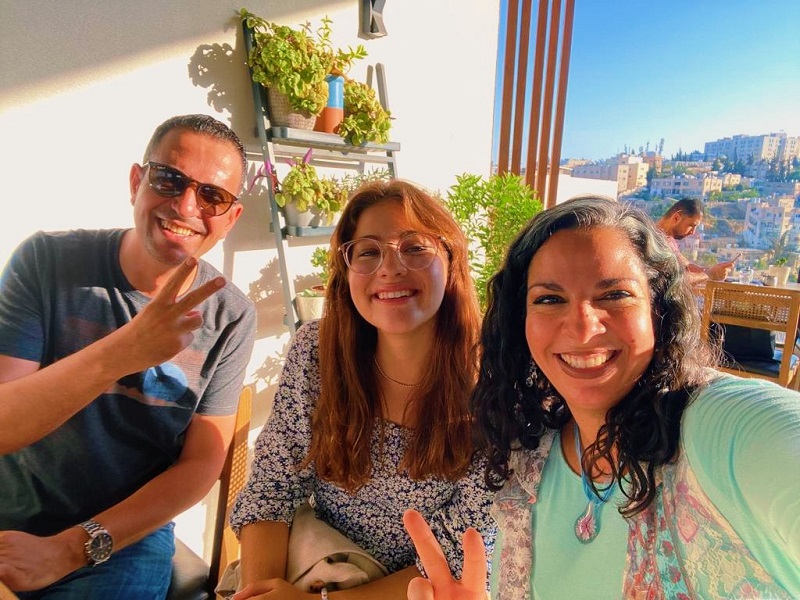
I’ll start off this blog post with something crazy. My friend from Georgetown (who I met in Amman) has an Arabic teacher. She knows my Arabic teacher from freshman year of high school, from almost four years ago! I got to meet both of them for coffee in Amman. It truly is small world in a big city.
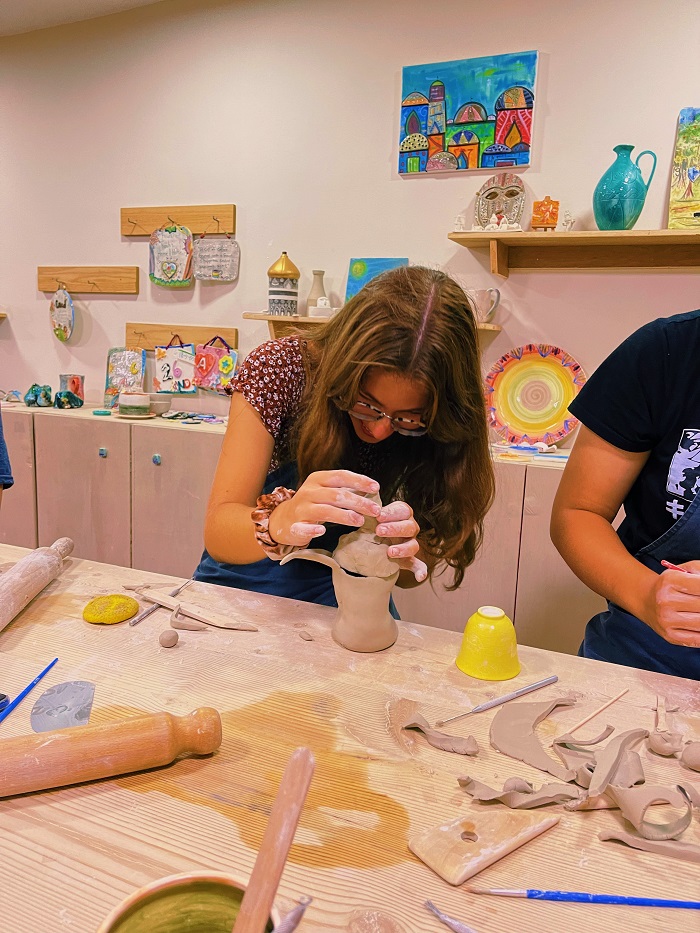
I had done pottery in the U.S., but not in the Middle East. Turns out its pretty similar, but with less rules of course. I tried to make a dellah, a Middle Eastern coffee kettle, but it failed. But hey, I still ended up with a decorated mug.
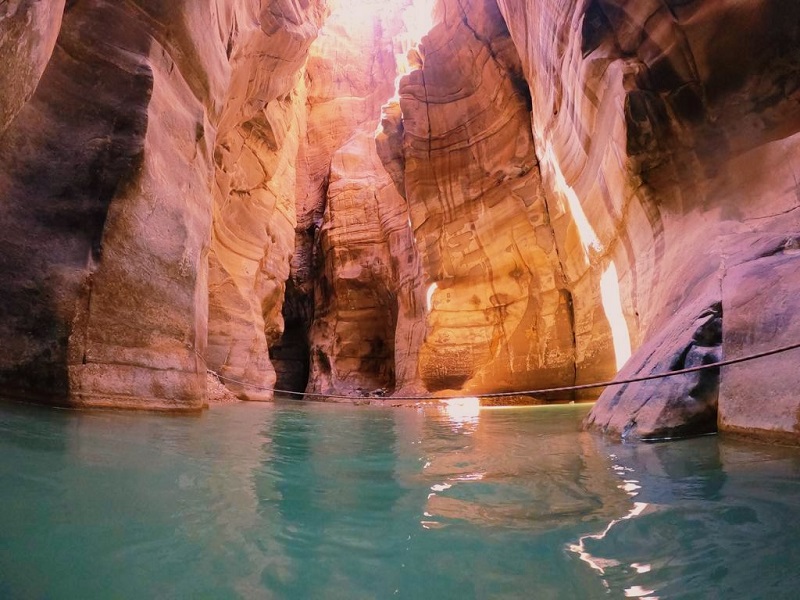
My friends and I took a trip to the all-famous wadi, Wadi Mujib. This picture was taken as we swam through it, little by little.
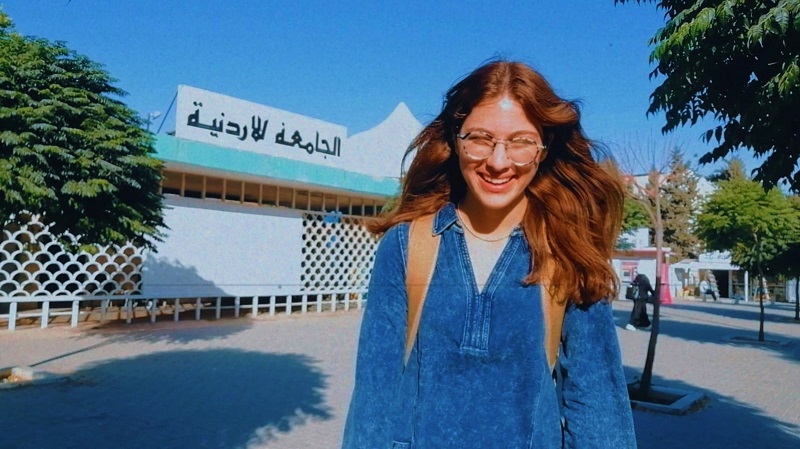
A picture of me in from of University of Jordan (taken by my language partner). Almost fifty thousand students attend annually. The simple and slightly archaic 80s-architecture I found aesthetic and intriguing for photos.
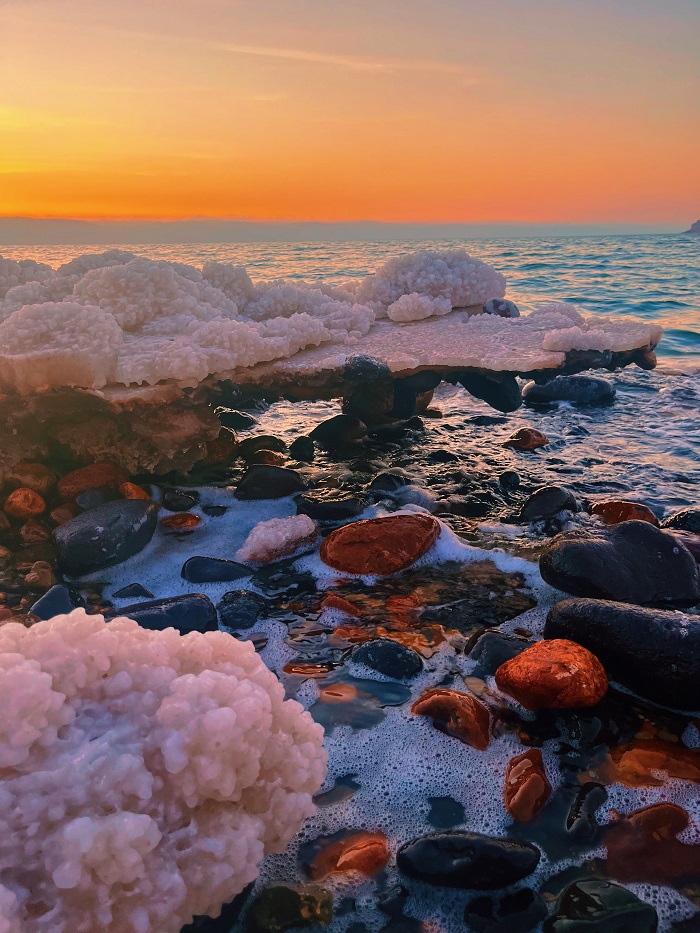
This is one of my favorite pictures of all time. I knew the dead sea had salt, but not this much. There is so much you can break off a piece as a relic to remember your travels. The combination of sunset and salt is just too good.
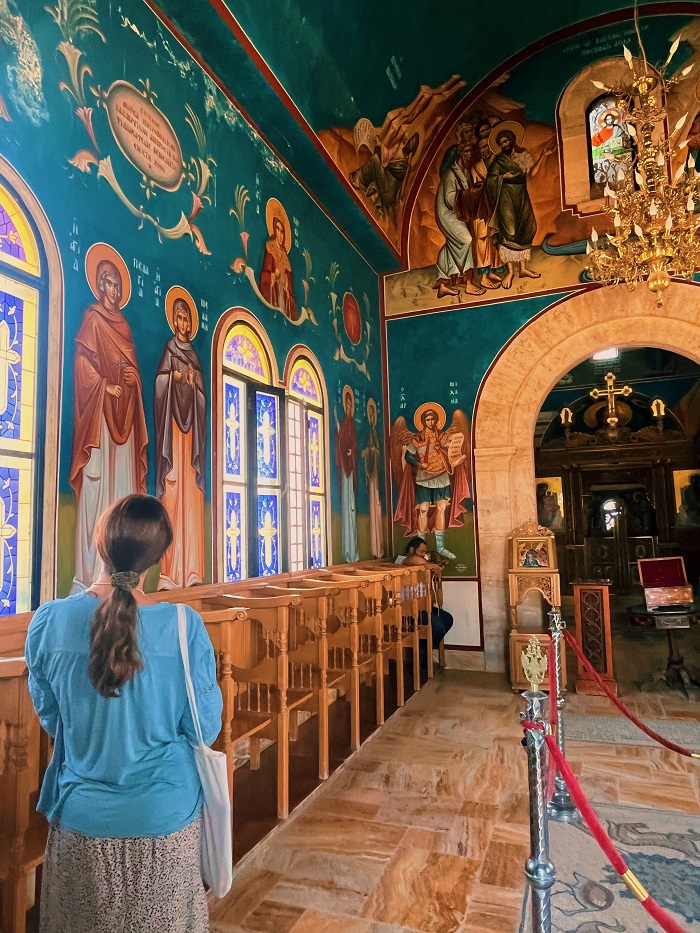
A picture of me facing a Christian wall painting in the Jesus Baptism church. This style of painting is from the European Golden Age. This is apparent from the gold-filled halos placed behind the disciples’ heads. I love being able to see and understand art from my history classes in the U.S.

I think this picture tops all of my experiences in Jordan. Spontaneously, my friend from Georgetown asked if I wanted to go to a jazz piano concert… in the Roman Amphitheater. This was my first time meeting him in person too. If it was only a jazz piano concert, I would have gone. But in the Roman Amphitheater??! Even better. Getting to hear music that I love surrounded by years of history, sitting on the same stairs that Romans did was incredible. The experience shared two of my favorite conversational topics: music and history (oh and some pretty cool architecture).
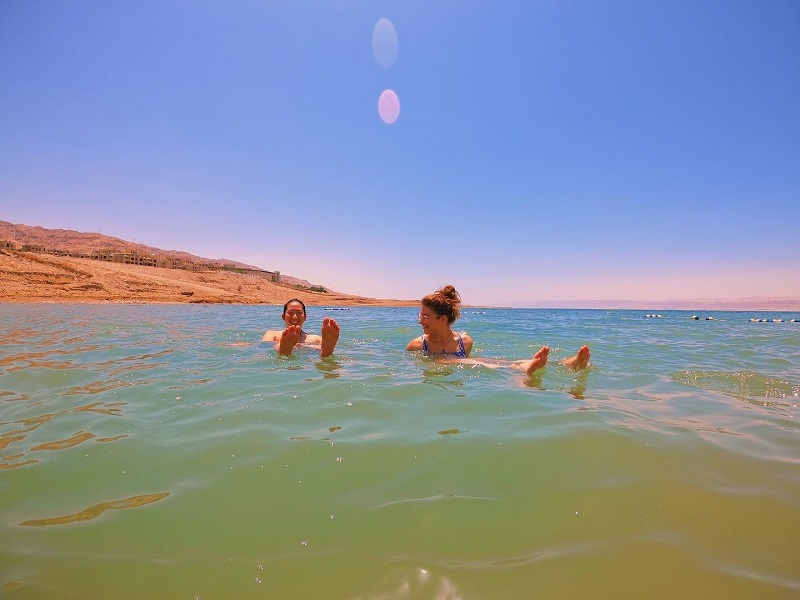
A picture of my friend Kelly and I in the dead sea. We were surprised by how much we actually floated. Somehow the salt tastes saltier than salt.
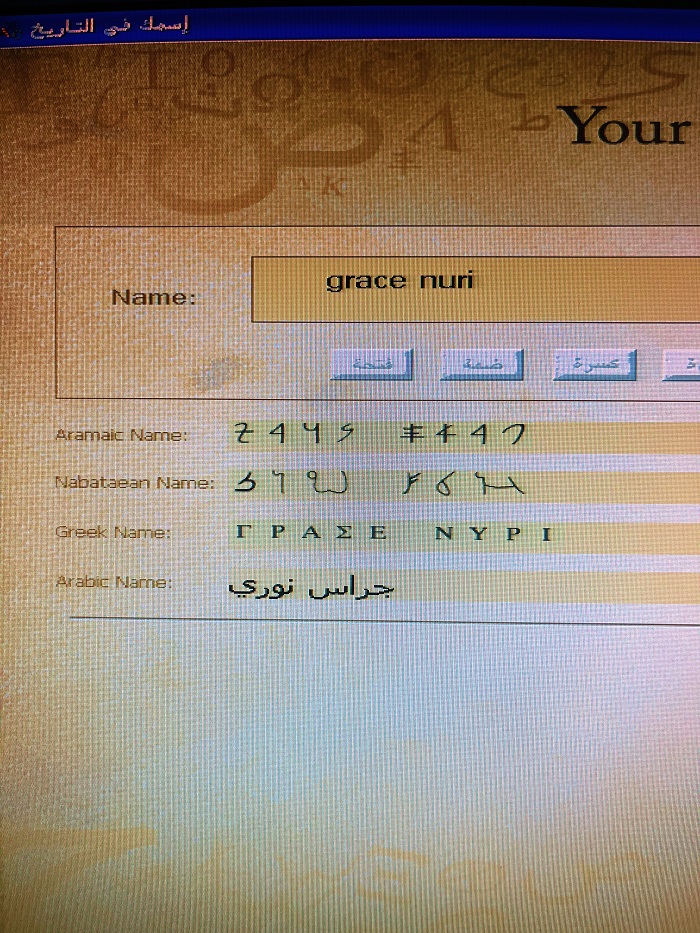
A picture of my name in Arabic, Aramaic, Nabataean and Greek from the Jordan Museum. It was cool to see the similarities and differences between Arabic and the other languages.
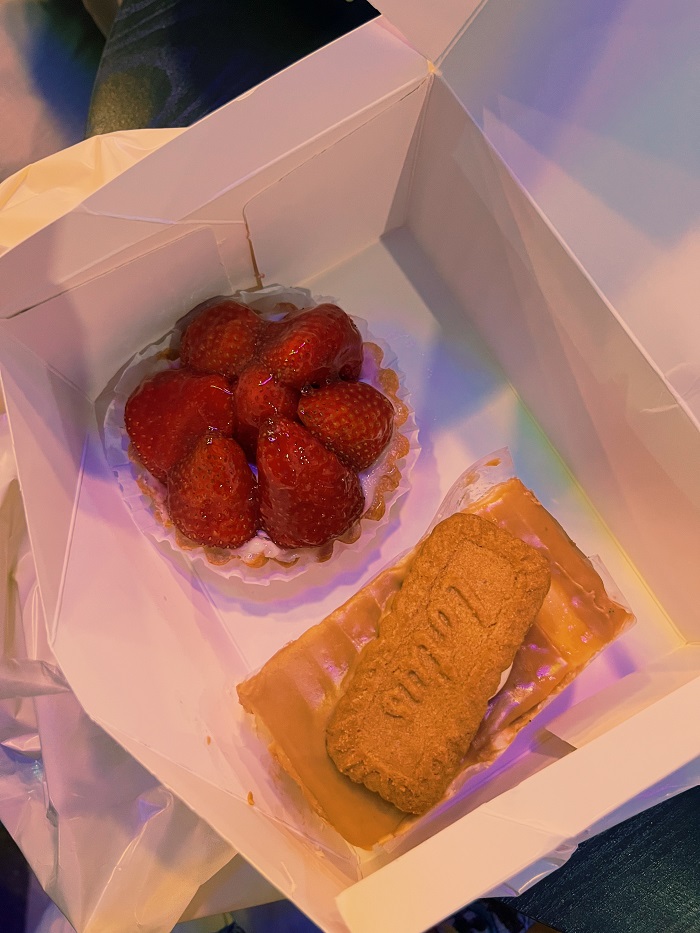
Another picture of food, but this time its in a box. It’s common to eat on the street in downtown in the evening. After walking in Wast-al Balad, we found some desert and took a seat in some chairs near the street and watched people walk by.

There are always quirky things to run into near rainbow street. This retro 1960s Volkswagen van library is something most people from the U.S. would not expect to find in Jordan.
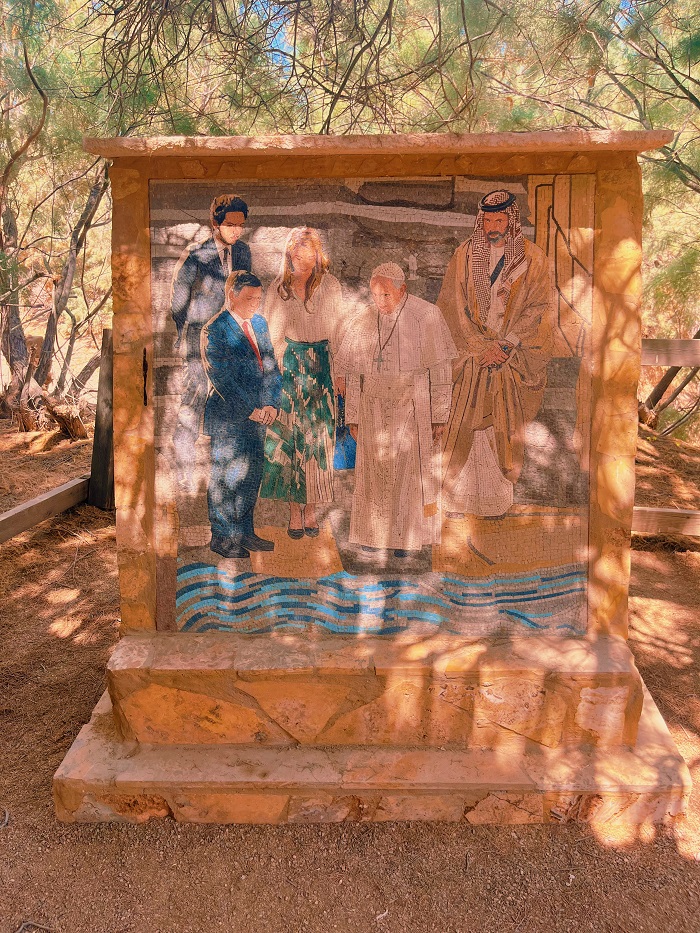
A byzantine-like mosaic of Pope John Paul II on his visit to The Baptism Site of Jesus Christ in southern Jordan. The site is right next to the Jordan River. My friends and I didn’t realize that it was the border of Palestine and Jordan right across the river. We were no more than ten feet away.
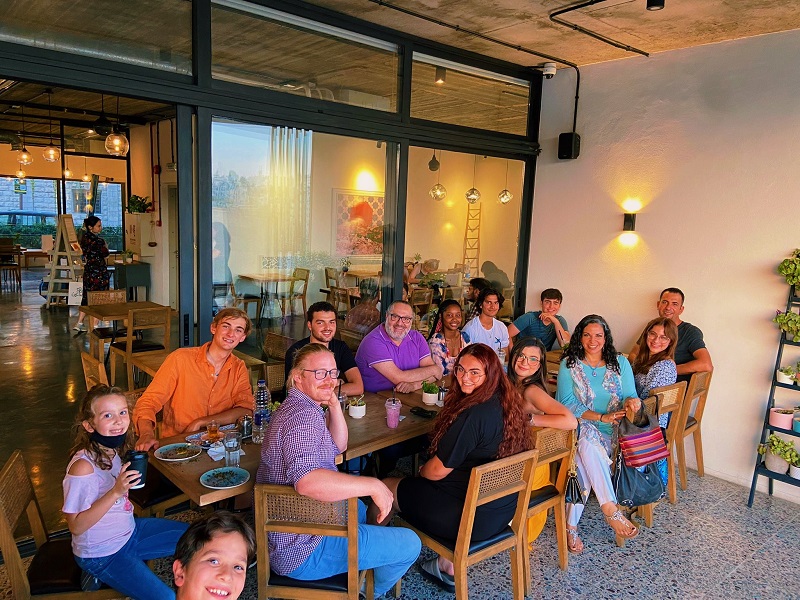
I had the opportunity to meet the producer, Issam Husseini, of the Netflix Top-Ten TV show, “Al-Rawabi School for Girls.” We sat for coffee and he talked about the meanings behind the show after I was invited to the discussion last-minute. Al-Rawabi is quite controversial in the Middle East because of how it is critical of certain taboos in Jordan. I never thought I would be sitting in a café talking to a producer of a major TV show. Life is crazy and unexpected.
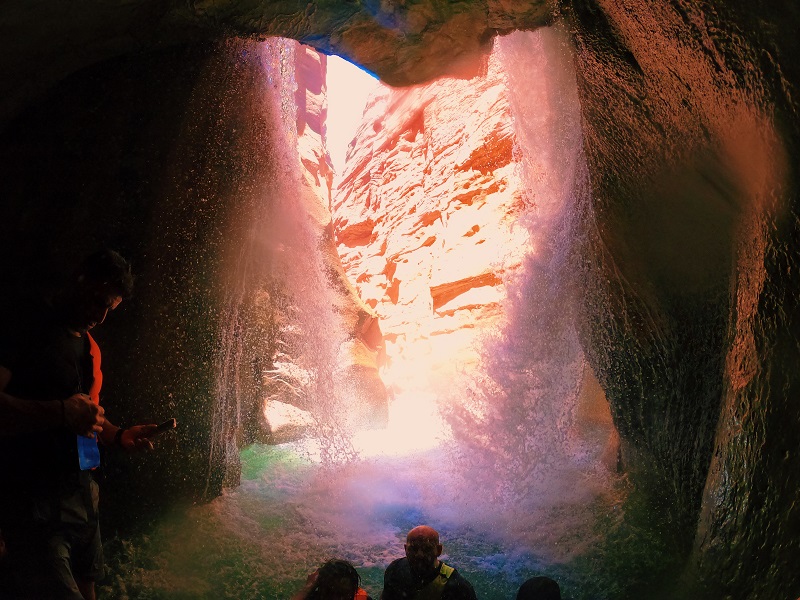
A picture taken on my friends’ GoPro, (our only camera) behind a waterfall at Wadi Mujib. It was honestly nice to walk and swim through the mujib not having to care about taking pictures, I could take in everything without having to think about aesthetic a rock could be, I know, so interesting. Sometimes having an eye for photos takes away the moment, and in the Wadi I got this moment back.
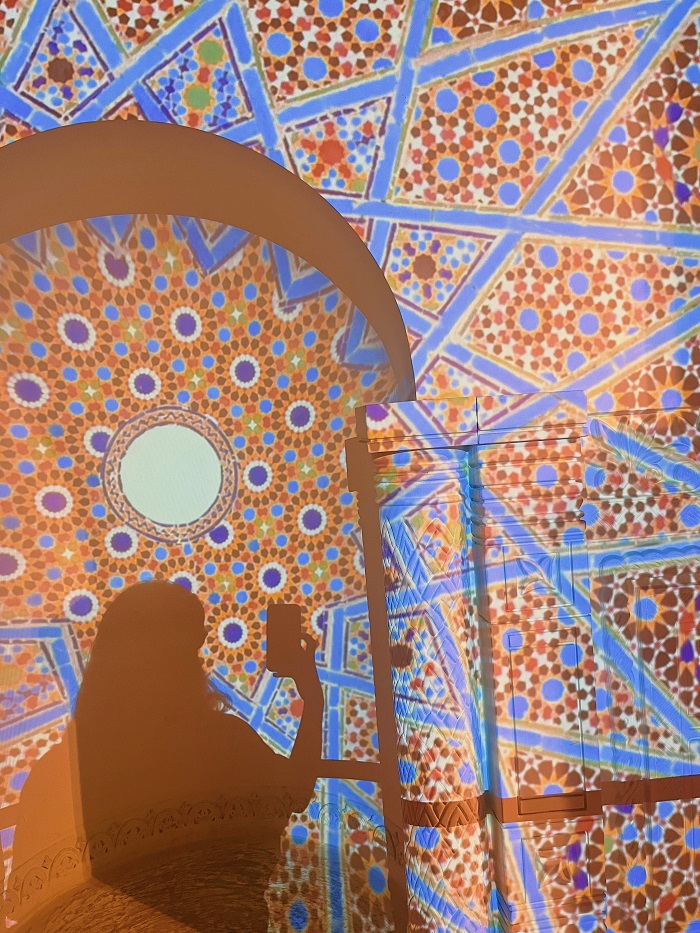
Amidst the arabesques, you can see my shadow taking the picture. The image displayed is from a projector, hence the shadow. In the Jordan Museum, the Muslim art changes every few seconds. This was the one I was able to capture. In Muslim art, living things are forbidden because they are considered sacred because living creatures are unique to God. Here we can see two of the three characteristics of Muslim art: arabesques and geometric motifs.
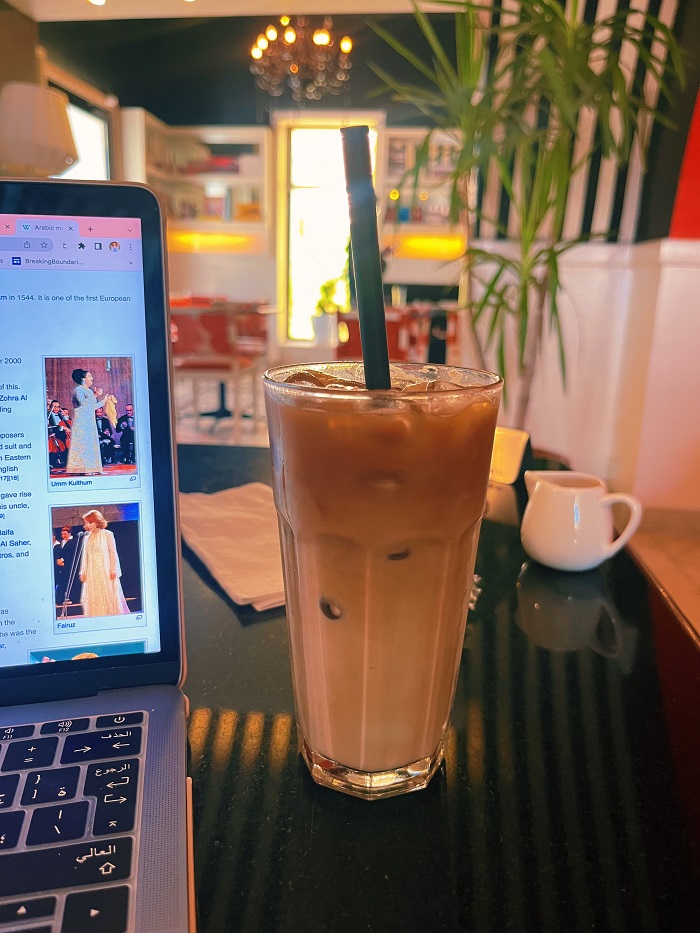
A coffee next to Fairuz and Umm kulthum at Books@Cafe, my favorite coffee and book shop in Amman. I love getting to research ideas for Arabic presentations that I am interested in from my daily life: history, art, and music.

My friends, Kelly and Tashina studying with me at a café nearby. I wish I could take some of these cafes back to the states!
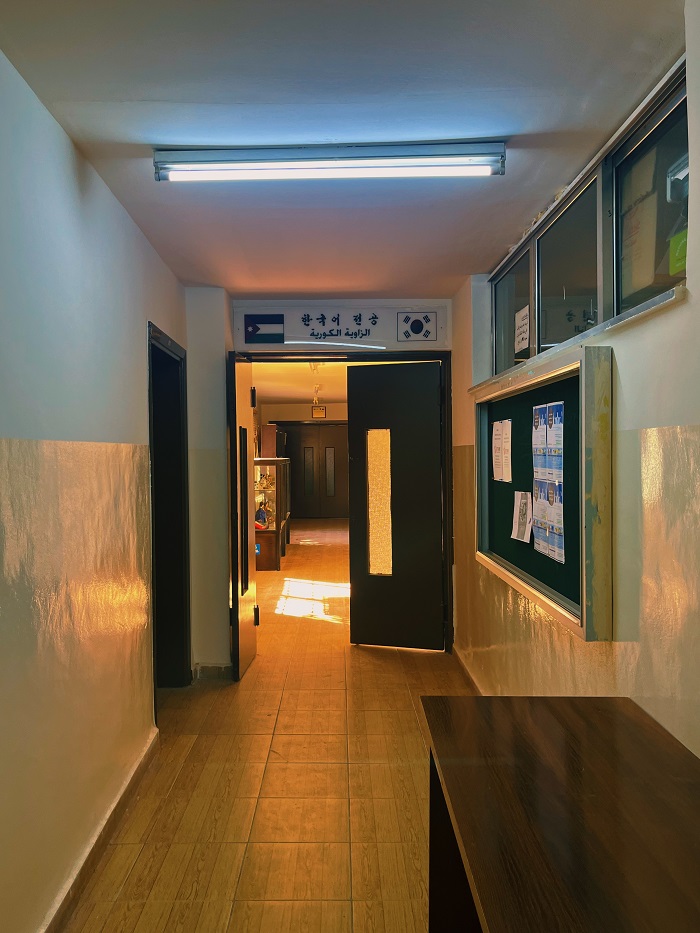
The lighting was it in this picture. The Korean Hallway at the University Jordan looks like it appeared out of Stranger Things. Not only can we see the strength of the Jordanian sun the ground, but then again reflected on the painted walls. Incredible.
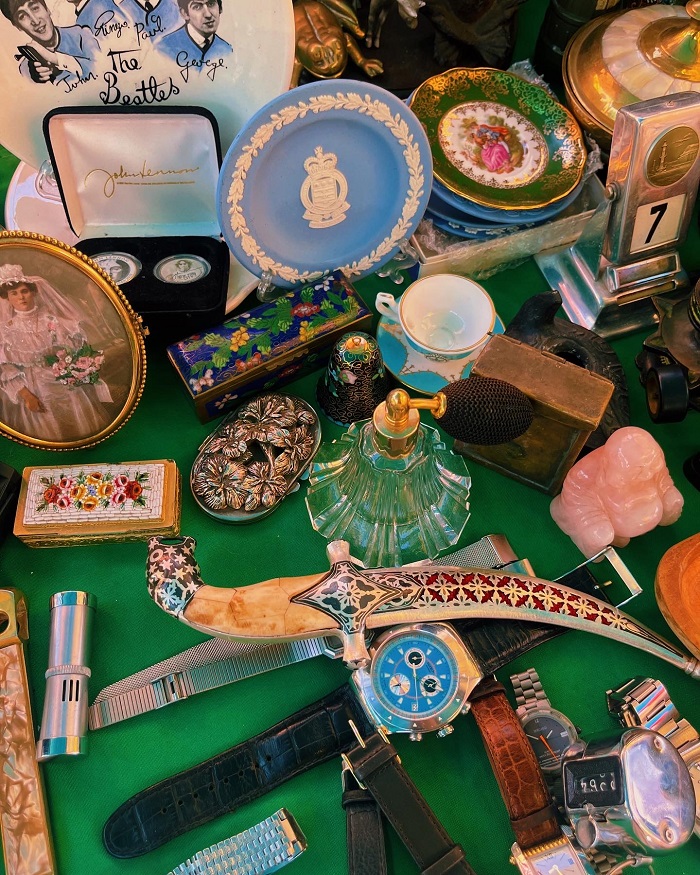
Some vintage trinkets from Souk-Al-Jara, the Friday market. I thrift a lot in the U.S., but here what I can thrift is from array of countries, not just one. When I see the intricacies of the objects, I see a rich past from a variety of middle eastern cultures. Thrifting is like learning a book, or a language.
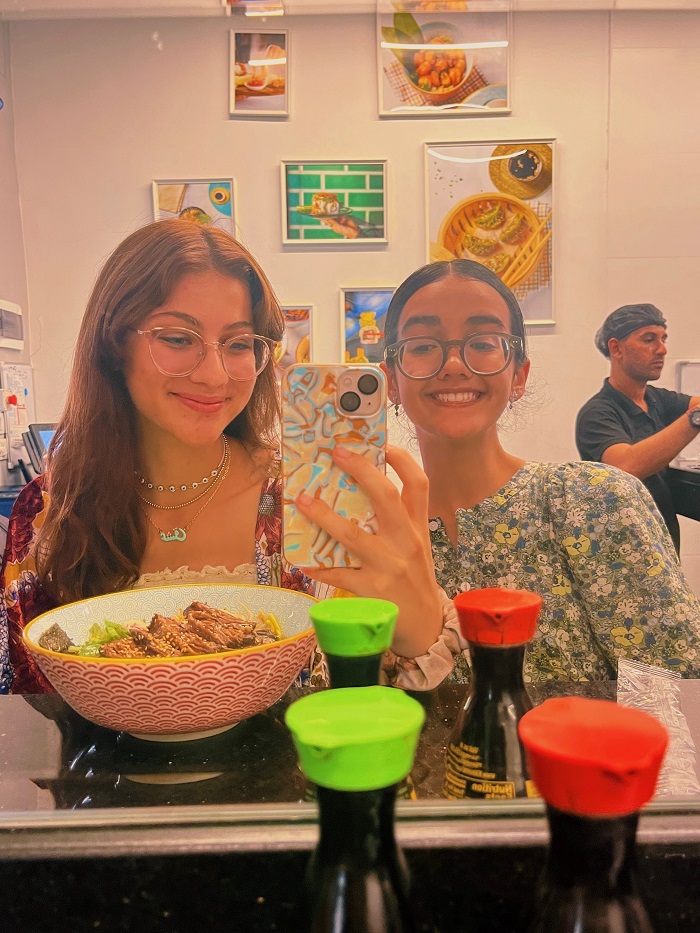
My friend Genevieve and I in a ramen place. First time having ramen in two months (unless you count the “cup o noodles”
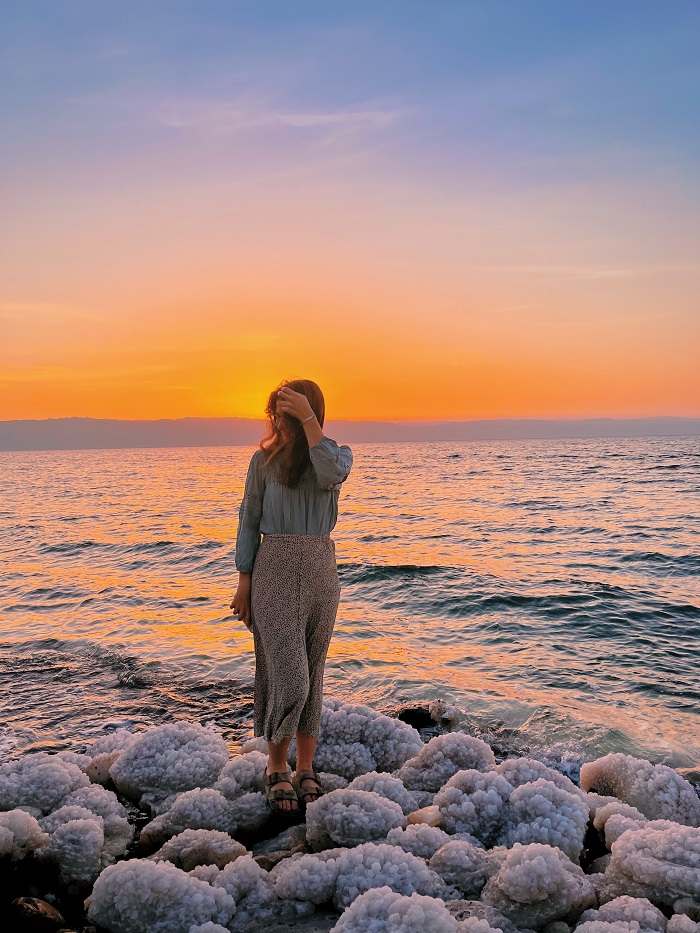
A final picture from the dead sea. I love rock-climbing, but I never thought I would get to climb salt formations. Always do it with shoes on! The contrast of the sea, the salt, the sunset, and the stones is unlike anything I’ve seen in the U.S.
More from the author:
Studying abroad in Jordan was quite literally my first experience, let alone, trip outside the U.S. I grew up traveling to North Carolina for hiking trips and to Pennsylvania to see family. Amman felt so far away and the world felt so big then. My father hasn’t been back to the Middle East since he left in the 80s. And now I’ve been here, with my heritage, with my language, with my culture, and this is only a portion of it, and only portion of the Middle East. Yet it feels like I’ve seen everything, experienced everything, on both a molecular and mountainous level (literally too, lots of hikes).
After studying Arabic at BYU now three years ago, I had found a part of myself and my heritage that I could cherish unlike anything else. Arabic was useful, it was beautiful, it was creative (except the rules), and it was a puzzle. It is a means of communication that people can use to express themselves, just like music or art. It felt that way back then when I slowly started learning it. Yet in Amman, instead of finding ways to express myself to others using Arabic, I found a way to express myself internally; understand myself. English has approximately 500,000 words. But turn to Arabic and its not even comparable: 12 million. Imagine how many new words there are to express and understand yourself now.
If I hadn’t learned Arabic, I wouldn’t have been able to talk to my family here with the same connection. Because of this language, I have the opportunity to understand a whole other side of me and my family’s past that has been waiting here, while meeting new people at the same time.
Something I’ve learned here is that jokes are funny in English, but joking in Arabic is a whole different level of entertainment (my apologies but this doesn’t include Arabic grammar). So thank you CET for the endless laughs. And with that, maa salaama CET… ahlan wa sahlan Georgetown.